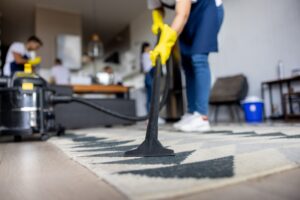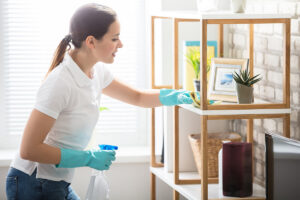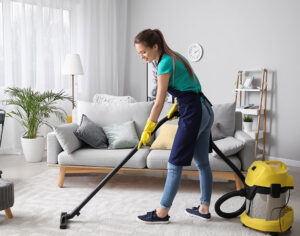In the home, dirt and filth can hide in odd locations. Even if you keep up with routine cleaning, it\’s simple to forget about these places, and without proper care, the buildup can become unsanitary. Discover the dirtiest spots in your home and how to thoroughly clean each one.
Viruses and bacteria in the home
The Society for General Microbiology claims that, in the proper conditions of temperature and nutrition, some bacteria can reproduce every 20 minutes.
Additionally, over 340 different bacteria were discovered on 30 different things in a 2016 investigation of the most contaminated items in the house.
There are many bacteria in your body that don\’t cause illness, thus not all bacteria are toxic. However, some are present all over your house and might make you ill, such as:
Staph yeast and mold, often known as Staphylococcus aureus
Salmonella Escherichia coli, also known as E. coli feces,
The COVID-19 pandemic\’s new coronavirus, the SARS-CoV-2 virus, is likewise present on many of the same surfaces. Shortness of breath, coughing, and fever are COVID-19 symptoms.
Your Workstation
Your workplace is certainly a germ-breeding ground if you frequently use the computer or work from home. This is due to the fact that the high-touch surfaces on the desk, keyboard, and mouse are rarely cleaned. Luckily, cleaning each of these surfaces is made simple by disinfectant wipes. Before washing electrical devices, think about squeezing out any extra liquid to prevent leaking moisture into the apertures. To keep germs at bay, wipe off every surface once every few days.
Faucets
The handles may be cleaned frequently, but what about the area where the water emerges? If you haven\’t cleaned this, there\’s a good chance you\’ll find dark, mildewy gunk, says cleaning specialist Donna Smallin Kuper. \”And you\’re using that water to brush your teeth. Ewww!\”
Every few months, according to Smallin, turn the faucet aerator counterclockwise to remove it and then soak it in vinegar for at least 15 minutes. (Be sure to observe how the aerator\’s assembly, which consists of a few parts, including a screen, is put back together.) Screw it back on after gently cleaning all components with an old toothbrush to get rid of any leftover debris.
Switches and Handles
The handles on the refrigerator doors, light switches, and, of course, the flush handle on the toilet all need more cleaning than they probably need. According to Debra Johnson, a training specialist at Merry Maids, \”They\’re easily overlooked in cleaning because they\’re small, and most people focus on the big things, like floors and countertops.\” \”Yet everyone touches them, so they have the most opportunity for germs.\” When doing your usual cleaning routine, wipe down handles and switches with a microfiber cloth moistened with your preferred cleaning solution.
Your Kitchen Cabinets Above
It\’s common for the area between your kitchen cabinets and the ceiling to go unnoticed. According to domestic cleaning specialist Derek Christian, \”We find years\’ worth of dust, rodent nests and droppings, long-forgotten food, and dead plants.\” \”Very few people ever clean this area.\”
For this task, get the stepladder and the hose attachment from your vacuum (or a wet/dry vac). You can also use a tiny hand broom and dustpan. The area probably won\’t get dusty enough to need cleaning every week; once a month or so should be plenty. To prevent errant dust from landing on areas you haven\’t yet cleaned, complete this activity first.
In the bathtub
According to Jackie Harmon, a green cleaning specialist, any standing water left behind after a shower or bath develops mildew, fungi, and staph germs. After each usage, you should dry the surface of your shower or tub to prevent the formation of bacteria. Additionally, disinfect frequently—up to three times per week for tubs used daily by several family members.
Harmon suggests doing this by keeping a spray bottle filled with a solution that has at least 3% hydrogen peroxide close to the tub. You\’re done after giving a dry tub a light mist. \”No need to wipe it up because hydrogen peroxide evaporates quickly,\” Harmon claims. Follow the manufacturer\’s instructions when cycling disinfectant through the pipes of whirlpool tubs once a month.
In the present and the future, AmeriStar Maids hopes to be your only option for cleaning services. You may count on the highest standard, most complete, and most knowledgeable maid services when you engage us for your house or cleaning! AmeriStar Maids stands apart from the competition despite the fact that you have a lot of cleaning service options at your disposal.
Visit https://www.ameristarmaids.com/ for additional details.
We can be reached at (570) 310-1057.
To contact us, send an email to info@ameristarmaids.com






